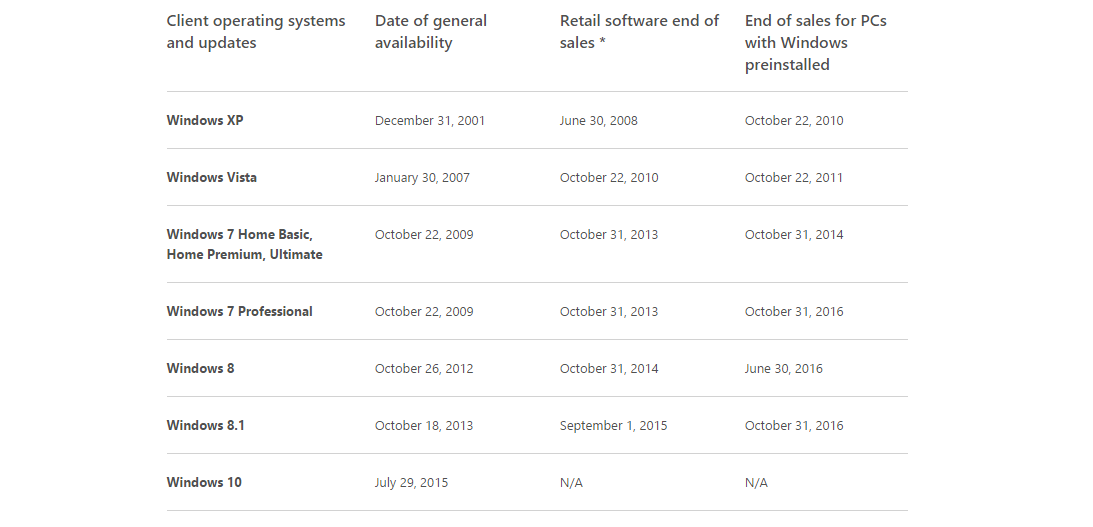Microsoft recently published a lifecycle of Windows Fact Sheet page, but we can see that this update of news Microsoft has done quietly without much noise; Microsoft has planned everything about Windows 7 or Windows 8.1, Microsoft has allowed its PC OEMs partners to sell Windows 7/8.1 preinstalled computers until October 31, 2016. After the limited time, the manufacturers are not allowed to sell or ship those Windows 7/8.1 PCs again, directly indicating that users are bound to use Windows 10, which is what Microsoft wanted to do.
OEMs Will be Not Allowed To Sell Windows 7 PCs After 2016
Users will have no choice but to select another operating system. The only choice is to select Windows 10. After October 31, 2016. Microsoft OEMs will not be allowed to sell this end-of-sale marked product, but retailers can’t be restricted in this terms of selling Microsoft pre-installed products in the open market. Microsoft has restricted these dates to Windows 7 Professional and Windows 8. Another interesting fact is that the three-year-old Operating System version Windows 8 also has an end-of-sales date of July 30, 2016. But if we can see, the date of Windows 8 preinstalled laptop devices is much more than enough date which has been provided. Associations with big business permitting assertions and Software Assurance, the recent is an annuity-style program that gives extra rights, will, in any case, have the capacity to buy new PCs after the due date, then minimization the OS from the as of now introduced Windows 10 to Windows 7 on the off chance that they needed to continue utilizing the more established version. The drawback of the OEM augmentation is that Windows 7 will soon confront an immovable due date of an alternate sort: Microsoft will issue the most recent security upgrades for it on January 14, 2020, or a little more than three years after the last new PCs are fabricated with the working framework. Significantly more than part of the way through its decade of the bolster, Windows 7 remains the most prominent rendition of Windows. As indicated by examination seller Net Applications, Windows 7 represented almost 62% of all duplicates of Windows being used amid October, much more than Windows XP (with 13%), Windows 8/8.1 (15%), and Windows 10 (9%) consolidated.
